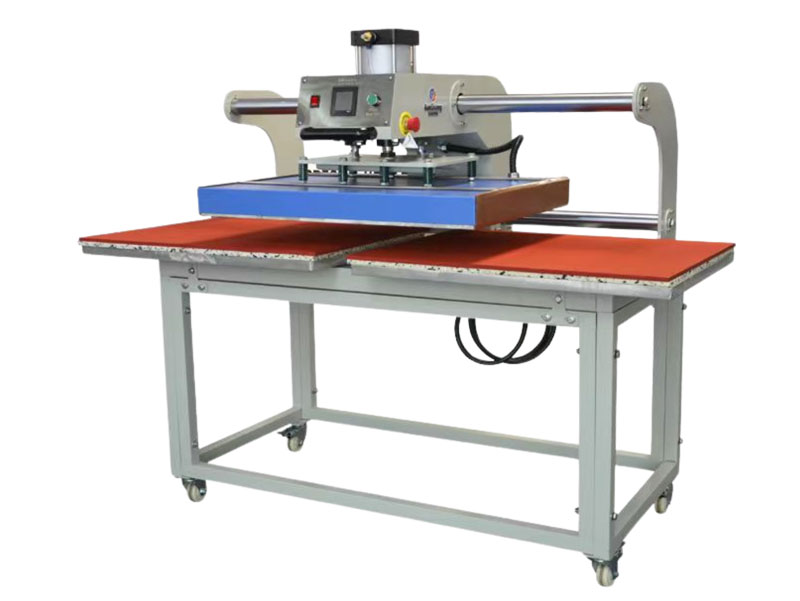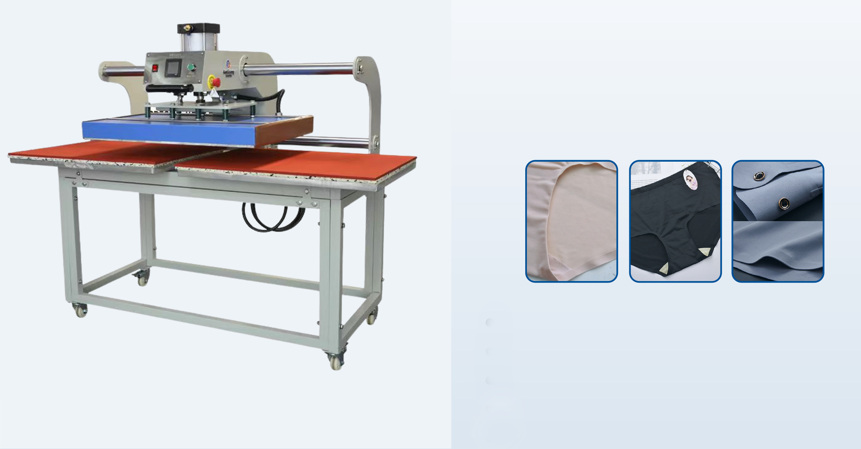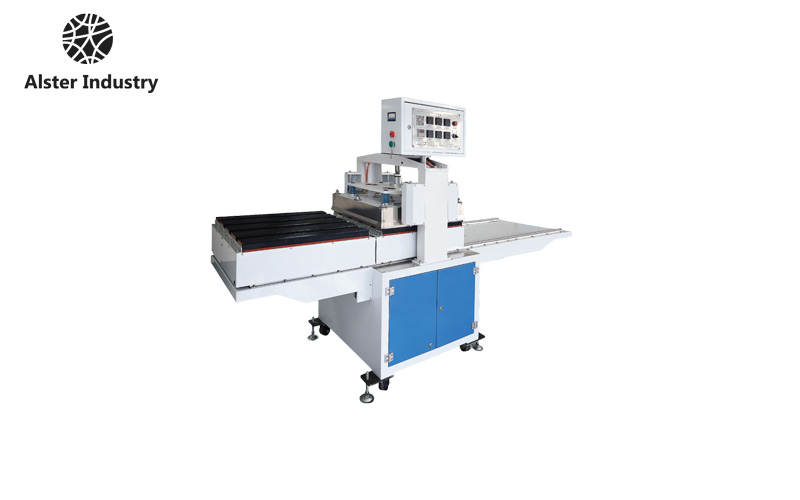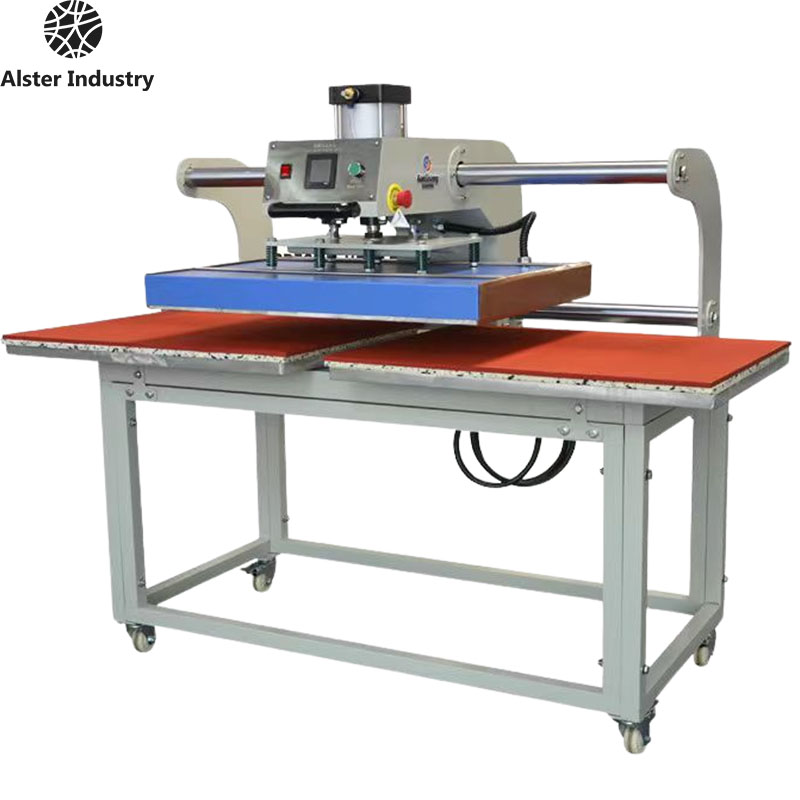In the world of apparel production and customization, few tools are as versatile and essential as the hot press machine. Whether you are a small business owner running a custom T-shirt printing shop, a hobbyist interested in creating personalized apparel, or a large-scale manufacturer producing high-quality garments, the hot press machine plays a central role.
This comprehensive guide will explore everything you need to know about a hot press machine for shirts—from its basic working principles to its types, benefits, applications, and even buying tips. By the end of this article, you’ll understand why it’s a must-have tool for anyone working with customized apparel and how to choose the right one for your needs.

1. What is a Hot Press Machine?
A hot press machine—often called a heat press—is a device designed to apply heat and pressure to transfer designs, logos, or graphics onto garments, especially shirts. It operates by heating a platen (the flat heated surface) to a specific temperature and pressing it firmly onto the fabric with a transfer medium such as heat transfer vinyl (HTV), sublimation paper, or screen-printed transfers.
Unlike traditional irons, a hot press machine provides:
Consistent temperature across the platen.
Uniform pressure for better adhesion.
Adjustable settings to handle different fabrics and transfer types.
This makes it the go-to equipment for professional results in shirt customization.
2. Why Use a Hot Press Machine for Shirts?
When it comes to shirts, appearance and durability are critical. Printing designs that peel, crack, or fade after a few washes can ruin the customer experience. That’s where the hot press machine comes in.
Key Benefits:
Professional Quality
Delivers sharp, vibrant, and long-lasting designs.Durability
Transfers are resistant to washing and wear when applied correctly.Efficiency
Can handle multiple shirts quickly, making it ideal for business use.Versatility
Works on cotton, polyester, blends, and specialty fabrics.Customization
Perfect for logos, slogans, images, or full-color designs.
Whether for fashion branding, sports uniforms, corporate apparel, or personal gifts, the hot press machine ensures quality that simple DIY methods cannot match.

3. How Does a Hot Press Machine Work?
The principle is simple: heat, pressure, and time.
Heat: The machine heats the platen to a preset temperature depending on the transfer type (usually between 300–400°F / 150–200°C).
Pressure: When the platen closes, it applies firm and even pressure to the shirt and transfer.
Time: Most transfers require 10–30 seconds of pressing to bond correctly.
The result is a design that fuses into the fibers of the shirt, ensuring long-lasting adhesion and vibrant appearance.
4. Types of Hot Press Machines
There are several types of hot press machine, each suited for different needs:
4.1 Flat Heat Press Machine
Features a flat upper platen pressing down directly onto a flat lower platen.
Simple design and highly versatile.
Suitable for T-shirts, fabrics, and flat items like mouse pads or puzzle boards.
Ideal for beginners and general shirt-printing applications.
4.2 Clamshell Heat Press
Opens like a clamshell.
Compact and easy to use.
Best for beginners and small spaces.
4.3 Swing-Away Heat Press
Upper platen swings away.
Offers more workspace and safety.
Ideal for thick garments or multipurpose use.
4.4 Draw Heat Press
Lower platen pulls out like a drawer.
Keeps hands away from heat.
Popular in high-production settings.
4.5 Automatic or Pneumatic Heat Press
Uses air pressure for automation.
Consistent results with less manual effort.
Best for large-scale shirt printing businesses.
4.6 Seamless Underwear Leg Opening Heat Press Machine
Designed specifically for pressing and bonding seamless underwear leg openings.
Provides smooth edges without stitches, enhancing comfort and durability.
Ideal for lingerie, activewear, and seamless garment production.
A niche machine, mainly used in specialized textile factories.
Each type of hot press machine has pros and cons. The choice depends on your volume, budget, and workspace.

5. Step-by-Step Guide: Using a Hot Press Machine for Shirts
Here’s a simple workflow to achieve great results:
Set up the machine
Plug it in and set the temperature, pressure, and time according to your transfer material.Prepare the shirt
Lay it flat, smooth wrinkles, and pre-press for a few seconds to remove moisture.Position the design
Place the transfer paper or vinyl cutout onto the shirt in the correct position.Apply heat and pressure
Close the platen and let the machine press for the required time.Peel and finish
Once done, peel off the transfer backing (hot peel or cold peel depending on material).Final check
Inspect the shirt for even adhesion and finish with a light repress if needed.
Following these steps ensures professional-grade shirt designs every time.
6. Applications of Hot Press Machines in Shirt Printing
The hot press machine is versatile in its applications.
Custom T-shirts: Perfect for small businesses or startups selling personalized apparel.
Sports uniforms: Apply team logos, player names, and numbers with precision.
Corporate branding: Add company logos to shirts for employees or promotional events.
Fashion industry: Designers use presses for trendy graphics and limited-edition collections.
Event merchandise: Concerts, festivals, and fundraisers often rely on shirt printing for branding.
No matter the purpose, the hot press machine guarantees durability and style.
7. Advantages of Using a Hot Press Machine
High precision in design placement. A hot press machine ensures accurate alignment of graphics, making shirts look professional and consistent, even when producing large batches.
Scalability for both small orders and bulk production. Whether you are printing a single custom shirt for a client or fulfilling hundreds of orders for an event, the machine adapts easily without sacrificing quality.
Affordability compared to screen printing setups. Unlike traditional methods that require multiple screens and inks, the hot press machine is budget-friendly and offers a faster return on investment for startups and small businesses.
Durability in printed results. Properly applied transfers resist peeling, cracking, and fading, allowing designs to withstand frequent washing and long-term wear.
Low maintenance with basic care. Routine cleaning of the platen and simple upkeep keep the machine running smoothly, reducing downtime and repair costs. Additionally, its straightforward design means even beginners can operate it without steep learning curves.
8. Common Challenges and How to Solve Them
While the hot press machine is reliable, issues can occur:
Peeling designs: Usually due to low temperature or insufficient pressure.
Burned fabric: Happens if temperature is too high or press time too long.
Ghosting effect: Caused by shifting transfers during pressing.
Solutions include calibrating settings, practicing proper alignment, and using quality transfer materials.
9. Tips for Choosing the Right Hot Press Machine for Shirts
When shopping for a hot press machine, consider:
Size of platen: 15″x15″ is standard, but larger is better for variety.
Temperature accuracy: Digital controls ensure precision.
Pressure adjustment: Essential for different fabrics.
Durability: Look for solid build quality and warranty.
Budget vs. volume: Balance investment with expected workload.
10. Maintenance and Care
To keep your hot press machine in peak condition:
Clean the platen regularly to prevent residue.
Check for even heating periodically.
Lubricate moving parts if recommended by the manufacturer.
Store in a dry, dust-free environment.
Proper care ensures a long service life and consistent results.

11. Hot Press Machine vs. Alternatives
Some alternatives exist, but they often fall short:
Ironing: Inconsistent heat and pressure. Not suitable for business.
Screen printing: Great for large runs but costly and complex.
Direct-to-garment printing: High quality but expensive equipment.
Compared to these, the hot press machine is the most balanced choice for affordability, quality, and ease of use.
12. The Future of Hot Press Machines
With advancements in technology, future hot press machine models will feature:
Smart controls with automated adjustments.
Energy efficiency to reduce operating costs.
Multi-functionality for pressing not just shirts but also mugs, hats, and other products.
The industry continues to grow as more people demand custom clothing and on-demand printing solutions.
